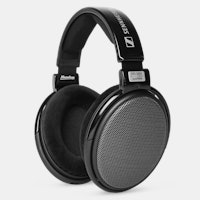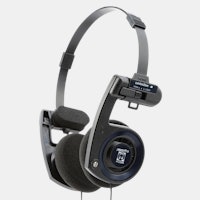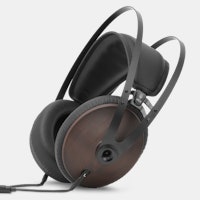Click to view our Accessibility Statement or contact us with accessibility-related questions





PRODUCTS YOU MAY LIKE
Trending Posts in Audiophile

MrChiSox
My little room work in progress.
It's not done, I apologize for the mess. Health issues have put this on hold. It's a small room and I'm likely to sell off my KEF 104.2 loudspeakers and some other gear after surrendering the living room to my wife after her patience of 35 years. She deserved her own little sanctuary.
Dec 26, 2024
magica
What lead/cable do i need?
i own a Drop + EPOS PC38X Gaming Headset and i need a new cable that connects the headset to the computer. i dont know what its called and i cant work out what to look for on amazon etc. could someone please help me with this
Dec 21, 2024

MrChiSox
New addition to the stable.
I made the decision to take advantage of the $600. price on the HiFiMan Arya Stealth, here pictured with the Meze 109 Pro. I think 2025 is going to be a really uneventful year so far as new purchases. I've also upgraded my Fiio BTR7 to the newly released BTR17 and I purchased the Earmen stack which consists of Amplifier, Linear PS, DAC & Streamer.
Dec 19, 2024

RNT47
Until when will the Sennheiser 58X and 6XX will be at discount price?
I'm planning on buying either one on the 18th and i'm worried i'll miss the discounted prices
Dec 16, 2024
MusicLvr
Drop x Campfire Audio Darkstar Review
The Darkstar definitely has a a unique sound that has an audiophile sub-bass bias. It is a balanced sound with open sounding mids and well extended treble. There is no mid-bass bloat thanks to...
Dec 4, 2024
bill.davies
BMR2 discounts for BMR1 owners
How about providing a BMR2 discount for BMR1 owners? Most of the "improvements" in the next gen should really have been there in the first which was a pretty big disappointment for most of us. UPDATE: 40% discount offered. That's great, I'm in. Thank you DROP.
Dec 3, 2024














And since I have a gaming laptop , do you think the audio jack can provide enough power to this headphone?
Usable amp/dacs run all the way from the $75 Fiio E10K, the $100 Monoprice "Desktop Amp" (it's also a DAC), the Schiit Fulla (USB powered), other Schiit products, all the way up to boutique stuff costing thousands.
Formulas you *might* be concerned about is the damping factor found by dividing the headphone Ohms (62), by the "output impedance" of the amplifier. Ideally you want to end up with a score 8+. Many amp manufacturers don't even disclose this number but fortunately most will also be low enough you really don't need to concern yourself with it. Even the Fiio is around 10 Ohms output impedance which gets you below the 8 mark (62/10=6.2) but many still love the E10K. Personally I run a lightly modded Creek OBH-11 (around $200 on Amazon) and an Audio-GD NFB-12 ($215+ shipping from China). Both are more than enough to drive these headphones.
BTW, it's not the headphone impedance (Ohms) that makes it hard to drive, it's it's fairly low sensitivity.
It's a matter of control of the drivers. When the coil (and thus, diaphragm) moves, it charges or discharges. When given more current, or drained of current, the coil moves. The buffer section of the amplifier has to not only quickly rush higher currents out, but also be able to drain them when coming from the drivers having to change direction or speed of movement quickly. With insufficient damping, the driver can under-shoot and over-shoot, resulting in poorer sound than with sufficient damping. In addition, the output impedance of the amplifier creates a voltage divider that will affect frequency response.
It's not much different than loudspeakers, except for the power magnitudes being off by 3-6 digits, and system costs being off by 2-4 digits.
At a given sensitivity, the lower impedance the driver, the greater damping factor is needed. As the impedance of the driver gets lower, any given output impedance from an amplifier will affect frequency response more than with a higher impedance driver (-0.05dB@500Hz shouldn't be audible, but -0.15dB@500kHz should be). An amplifier with a higher damping factor will have a lower output impedance (by definition). After a point, a higher damping factor will do nothing for a given set of drivers (even if you can measure differences, if they don't make about 0.1dB difference in the sound reaching your ears, you won't hear the differences).
You won't have any problems with it clipping, but if you wanted to get an O2 for listening at home, I'm sure you'd hear the difference.